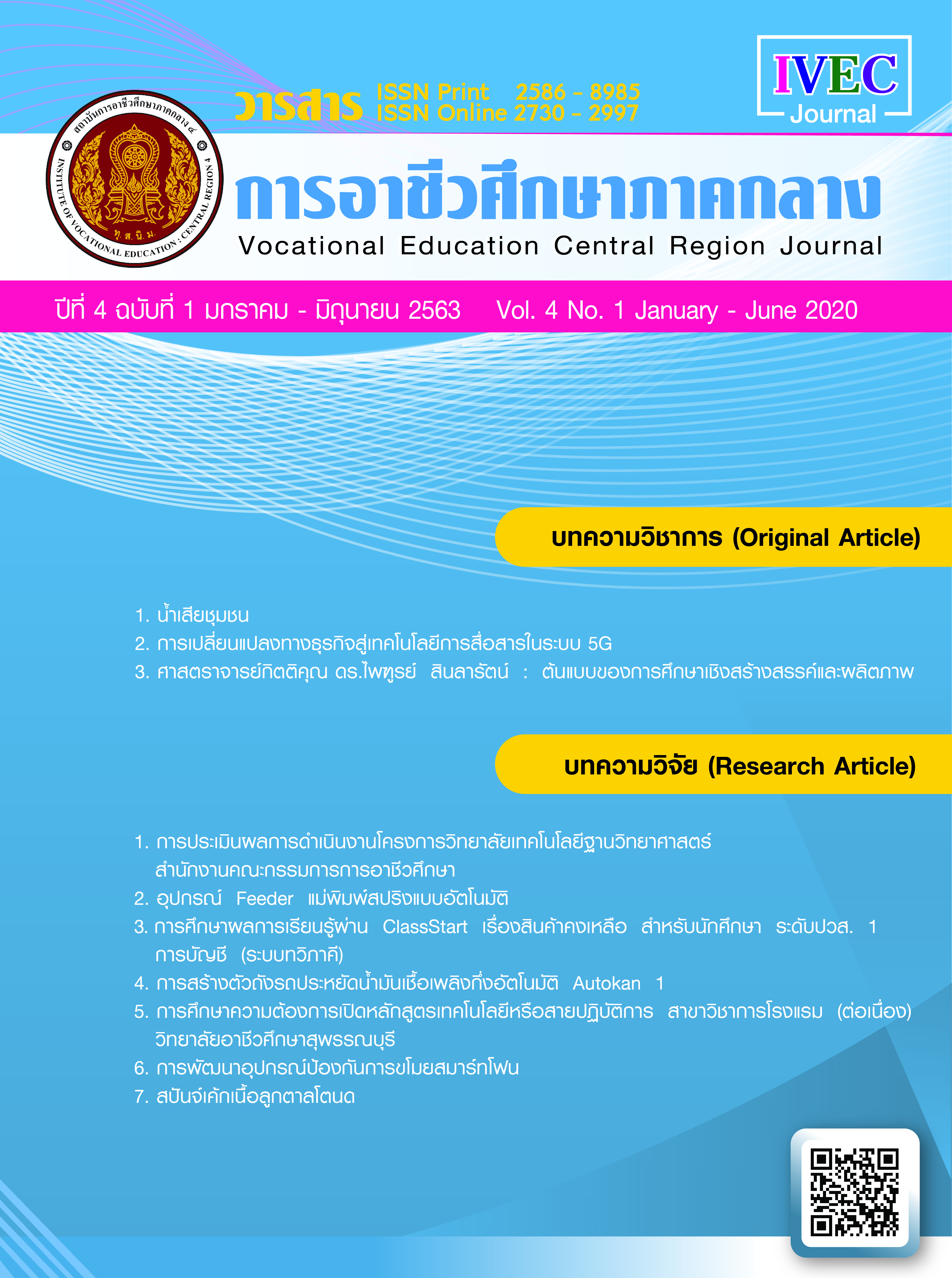Domestic Wastewater
Main Article Content
Abstract
Municipal wastewater was formed from many activities. Therefore it caused various different characteristics of wastewater. The wastewater collection system was divided into 2 types: the combined pipe system, which was a system that shares sewer and rainwater together. Wastewater and rainwater were sent to the wastewater treatment system before being released into natural water sources and separate piping systems was a system that separates wastewater and rainwater pipes. So there was only the wastewater sent to the wastewater treatment system.
In Thailand, there were 101 wastewater treatment plants under the supervision of a governing organization. They were 87 local municipalities, 1 provincial administrative organization, 2 sub-district administrative organizations, 2 cities in Pattaya, 1 Samut Prakan province and 8 Bangkok Metropolis. The total wastewater treatment system that local government organizations used in Thailand were the Bo Pang Treatment System (Oxidation pond) because it was a treatment system that could be operated easily, not complicated and it did not need to use the machine to operate the system. But it needed a lot of space to build a treatment pond. The second most popular wastewater treatment system was the Oxidation Ditch (OD) which had high treatment efficiency and it could effectively treat nitrogen compounds. But it had a high cost of construction and operation. Moreover it took more space than other types of accelerated sediment systems. And the system administrator must have a good understanding of the whole system.
Article Details
|
บทความ ข้อมูล เนื้อหา รูปภาพ ฯลฯ ที่ได้รับการตีพิมพ์ในวารสาร การอาชีวศึกษาภาคกลาง ถือเป็นลิขสิทธิ์ของวารสารการอาชีวศึกษาภาคกลางหากบุคคลหรือหน่วยงานใดต้องการนำทั้งหมดหรือส่วนใดส่วนหนึ่ง ไปเผยแพร่ต่อหรือเพื่อกระทำการใด ๆ กองบรรณาธิการไม่สงวนสิทธิ์ ในการคัดลอกบทความเพื่อการศึกษาแต่ให้อ้างอิงแหล่งที่มาให้ครบถ้วน สมบูรณ์ สงวนสิทธิ์ โดย สถาบันการอาชีวศึกษาภาคกลาง 4 ที่ตั้ง 90 ถนนเทศา ตำบลพระปฐมเจดีย์ อำเภอเมือง จังหวัดนครปฐม โทรศัพท์ 034 242 856 , โทรสาร 034 242 858 ISSN : 3056-9176 (print) ISSN : 2985-2382 (online) |
References
กรมควบคุมมลพิษ. (2560). คู่มือระบบบำบัดน้ำเสียชุมชน. ค้นเมื่อ พฤษภาคม 22, 2562, จาก http://www.oic.go.th/FILEWER CABINFOCENTER3/DRAWE R05 6/GENERAL/DATA0000/00000973.PDF
มั่นสิน ตัณฑุลเวศม์. (2541). คู่มือการเก็บตัวอย่างน้ำเสียชุมชน. กรุงเทพฯ: กรมควบคุมมลพิษ.
ศตพล มุ่งค้ำกลาง จำลอง โพธิ์บุญ และวิสาขา ภู่จินดา. (2556, กรกฎาคม-ธันวาคม). ระบบบำบัดน้ำเสียที่เหมาะสมสำหรับการจัดการน้ำเสียชุมชนขององค์การปกครองส่วนท้องถิ่น. การจัดการสิ่งแวดล้อม, 9, (2), หน้า 1-24.
สันทัด ศิริอนันต์ไพบูลย์. (2549). ระบบบำบัดน้ำเสีย การเลือกใช้การออกแบบการควบคุมและการแก้ไขปัญหา. กรุงเทพฯ: ท้อป.
สำนักงานนโยบายและแผนทรัพยากรธรรมชาติและสิ่งแวดล้อม. (2538). โครงการศึกษาเพื่อจัดลำดับความสำคัญการจัดน้ำเสียชุมชน. กรุงเทพฯ: บริษัทซีเทค อินเตอร์เนชั่นแนล จำกัด.
สำนักงานนโยบายและแผนทรัพยากรธรรมชาติและสิ่งแวดล้อม. (2562). รายงานสถานการณ์คุณภาพสิ่งแวดล้อม พ.ศ.2562. รายงานผลการวิจัย. กรุงเทพฯ: สำนักงานนโยบายและแผนทรัพยากรธรรมชาติและสิ่งแวดล้อม.
สุรีย์ บุญญานุพงศ์ และณัษฐพงศ์ วรรณวิจิตร. (2551). คู่มือการจัดการน้ำเสีย. ค้นเมื่อ พฤษภาคม 23, 2562, จาก http://www.sri.cmu.ac.th/~srilocal /water/mainpage.htm
Global Water Pathogen Project. (2019). Activated Sludge. Retrieved May 22, 2019, Form https:// www.semanticscholar.org /paper/GLOBAL-WATER-PATHOGEN-PROJECT-PART-FOUR.-MANAGEMENT-SLUDGENaughton/769daa0b3033b4a071c30cec 0399689428/figure/
Metcalf & Eddy. (2003). Wastewater Engineering: Treatment and Reuse. (4th ed.) .New York: McGraw-Hill.
US EPA. (2005). Guidelines for carcinogen risk assessment and supplemental guidance for assessing susceptibility from early-life exposure to carcinogens. Guidelines for carcinogen risk assessment.
Weber, K.P. (2016). Microbial Community Assessment in Wetlands for Water Pollution Control : PastPresent, and Future Outlook. Retrieved May 23, 2019, Form https://www.mdpi.com/2073-4441/8/11/503


